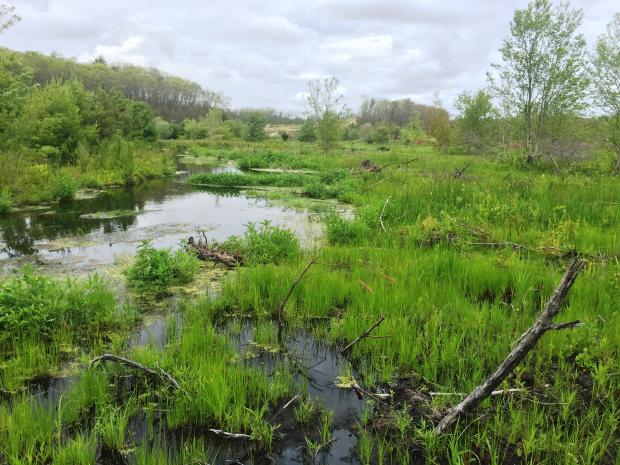An Emphasis on Learning
Ecological restoration is still a new and developing field, and there is much to learn about practice and outcomes. To help focus on what matters most, DER, within the Cranberry Bog Program, is pursuing a structured learning agenda with partnering organizations, including universities from around Massachusetts.
Key Questions
The following questions are currently being addressed through field research around Massachusetts in partnership with DER:
- Does restoration increase soil moisture at retired cranberry farms?
Research by UMass Amherst and Mt. Holyoke College will help assess this primary restoration goal. Related research is examining changes in soil microbes and organic carbon. - How do plant communities change in response to restored hydrology?
Research by the Woods Hole Research Center is tracking plant response to wetland restoration practices. - How does restoration effect nutrient processing (water quality)?
Restored wetlands have the potential to significantly improve regional water quality, especially in communities with nitrogen‐impaired waters. Research on this topic is now in progress by the NRCS Agricultural Research Station and others. - What is the greenhouse gas story across sites?
Research by U.S. EPA and Mt. Holyoke College is helping to document carbon and methane emissions across sites ranging from abandoned to actively restored. - How do fish and wildlife communities respond to restoration?
Healthy wetlands are teeming with fish and wildlife. The return of wildlife post restoration is being assessed by Living Observatory, UMass Boston, Mass Audubon, and others.
Initial Findings
Completed and on‐going studies are beginning to provide an indication that cranberry farms respond positively to ecological restoration. For example, it now appears that globally rare Atlantic white cedars – once found in swamps throughout the region – can be successfully planted, survive, and thrive. A study by DER found that almost 70% of trees planted at the Eel River Headwaters Project (Plymouth) survived after 5 years, with many today standing 15’ tall, producing cones, and developing seedlings. At Tidmarsh Farms (Plymouth), a volunteer‐based monitoring effort documented the migration of thousands of herring into the site post‐restoration. Prior to restoration, only a handful of herring trapped in farm ditches were observed each year. Such efforts help confirm the benefits of barrier removal and habitat improvement.
Partners
UMass Amherst and Boston, MIT, Tufts University, Mt. Holyoke College, NRCS ARS, U.S. EPA, Living Observatory, Towns of Plymouth, Falmouth, and Harwich, Woods Hole Research Center, Mass Audubon, Mass Bay Program, and more.
We welcome more learning partners!

